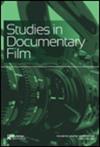阿德莱德大学泰特博物馆收藏的澳大利亚人的笔及其作为人工制品的使用注释
IF 0.8
4区 综合性期刊
Q3 MULTIDISCIPLINARY SCIENCES
Transactions of the Royal Society of South Australia
Pub Date : 2023-07-25
DOI:10.1080/03721426.2023.2240994
引用次数: 0
摘要
本文章由计算机程序翻译,如有差异,请以英文原文为准。
Notes on the Pens Collection of Australites in the Tate Museum, The University of Adelaide, and their use as artefacts
ABSTRACT The Tate Museum (The University of Adelaide) holds a large collection of (tektites) australites including the Pens Collection from the Florieton area in east-central South Australia. Many of these specimens are intact or near-so and have the various forms ascribed to their behaviour as they entered the Earth’s atmosphere. However, a significant number, some of which may have been initially fractured and broken by erosional processes on the Earth’s surface, were later reworked by Aboriginal Australians to form small tools and hence are important artefacts. Of the Florieton specimens, 6.5% have been reworked into microlithic flakes. This note points to the historical value of the Pens Collection, discusses the nature of the environment in which they were found, and speculates about the collecting and adaptation of australites by Aboriginal Australians.
求助全文
通过发布文献求助,成功后即可免费获取论文全文。
去求助
来源期刊
CiteScore
1.40
自引率
12.50%
发文量
17
审稿时长
>12 weeks
期刊介绍:
Published since 1880, the Transactions of the Royal Society of South Australia is a multidisciplinary journal that aims to publish high quality, peer-reviewed papers of particular relevance to Australasia.
There is a particular focus on natural history topics such as: botany, zoology, geology, geomorphology, palaeontology, meteorology, geophysics, biophysics, soil science and environmental science, and environmental health. However, the journal is not restricted to these fields, with papers concerning epidemiology, ethnology, anthropology, linguistics, and the history of science and exploration also welcomed.
Submissions are welcome from all authors, and membership of the Royal Society of South Australia is not required.
The following types of manuscripts are welcome: Reviews, Original Research Papers, History of Science and Exploration, Brief Communications, Obituaries.

 求助内容:
求助内容: 应助结果提醒方式:
应助结果提醒方式:


